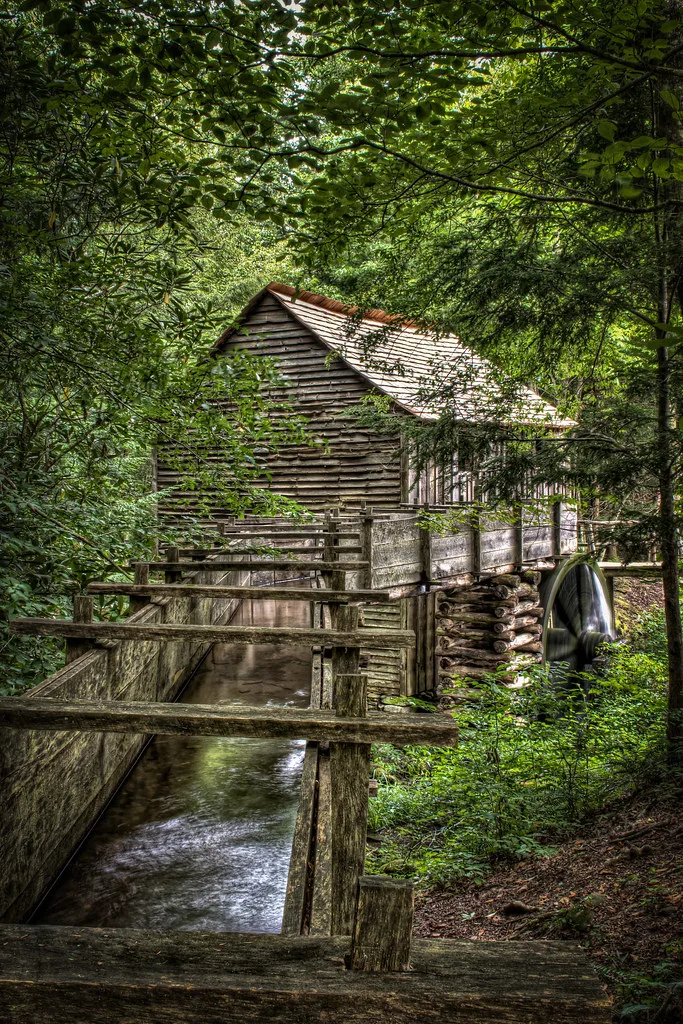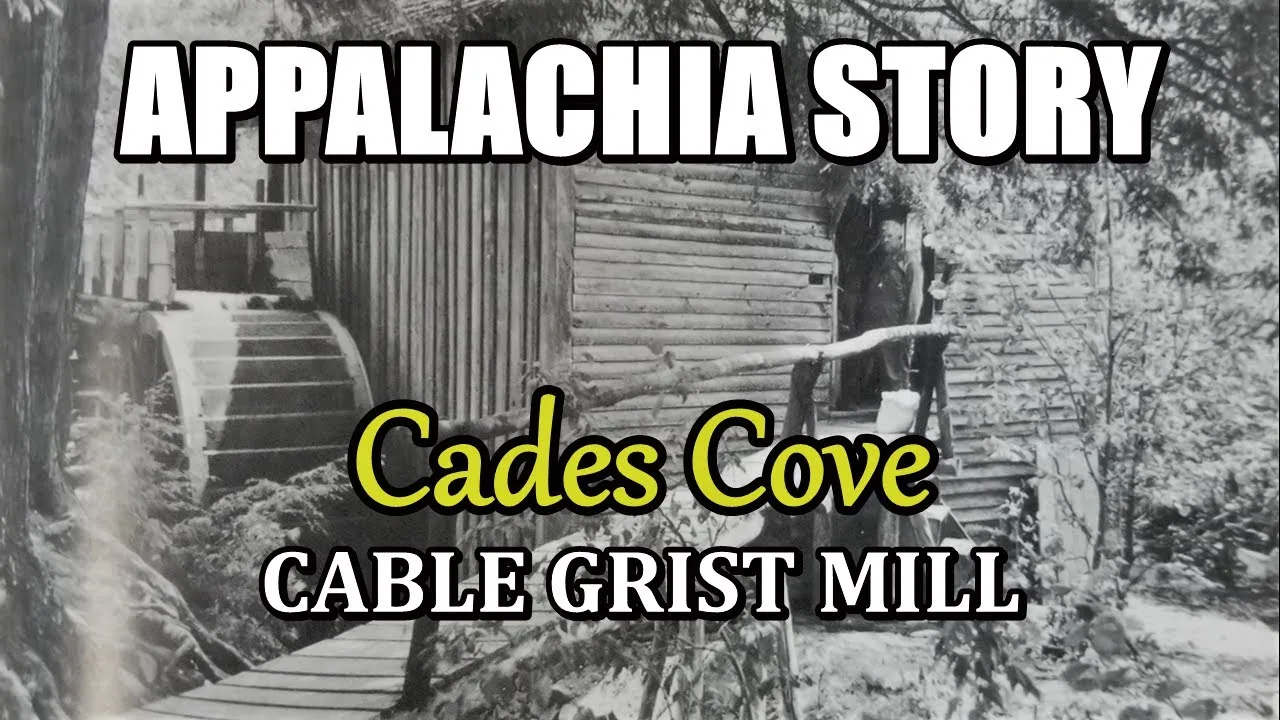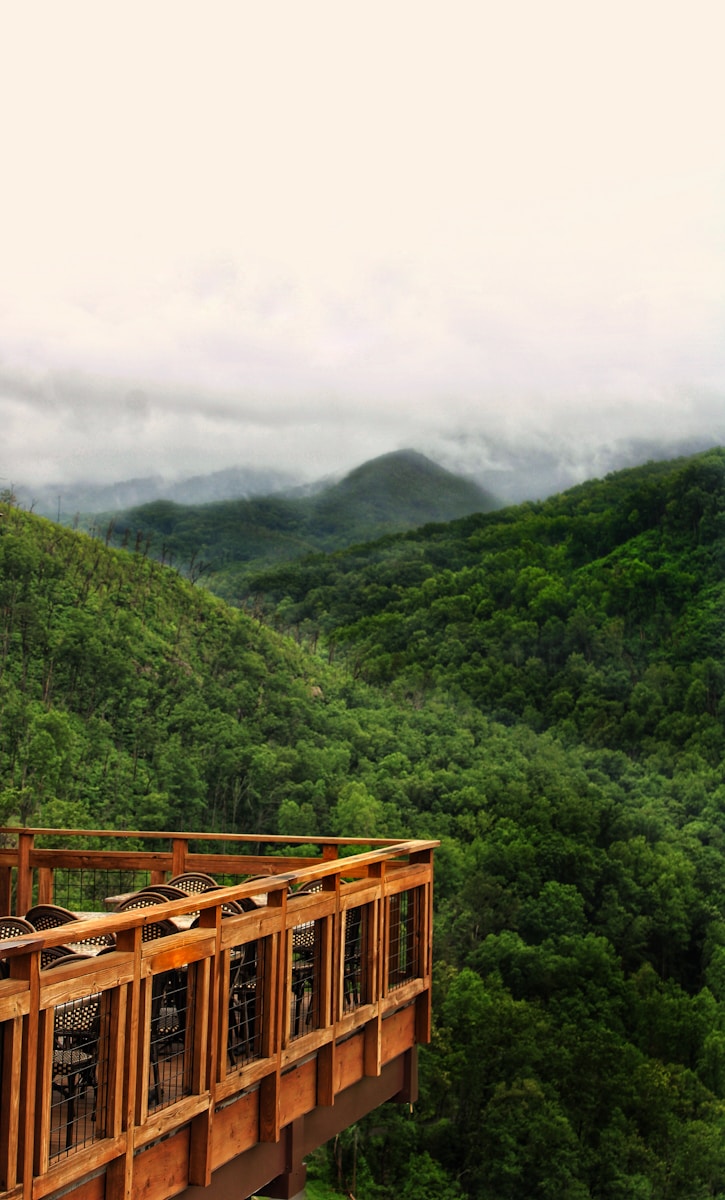As a native son of the Appalachian region, I’ve always been drawn to the whispers of history echoing through the majestic peaks of the Great Smoky Mountains National Park. From a young age, I spent countless hours exploring hidden trails, listening to the tales of those who came before us. Few places in the Smokies hold a deeper significance for me than Cades Cove. This captivating valley, nestled amidst towering trees and sparkling streams, was once a thriving mountain community, and at its heart stood a testament to human ingenuity – the Cable Mill.

The Cable Mill wasn’t just a structure; it was the lifeblood of Cades Cove. The rhythmic groan of the waterwheel, the industrious clatter of machinery, these sounds were the soundtrack to daily life for generations. Imagine the hustle and bustle around the mill – farmers hauling sacks of grain, families waiting patiently for their flour, the miller, a skilled craftsman, covered in a fine dust, meticulously overseeing the operation. The Cable Mill wasn’t just a place of production; it was a center of community, a place where folks gathered, shared stories, and built a life together.
But the Cable Mill’s story goes beyond its daily function. It’s a saga of resilience, innovation, and a testament to the pioneering spirit that tamed the wilderness. The mill, named after its co-owner Becky Cable, an extraordinary woman who defied societal expectations, stands as a symbol of her unwavering determination. Becky’s story, intertwined with the Cable Mill’s history, adds a remarkable human touch to this enduring landmark.
As a writer passionate about bringing the Smokies’ past to life, I’m thrilled to take you on a journey through time, to explore the fascinating story of the Cable Mill. We’ll delve into its construction, the ingenious mechanics that powered it, and the lives of the people who made it a cornerstone of Cades Cove. So, put on your metaphorical hiking boots, and get ready to discover a hidden gem in the heart of the Great Smoky Mountains National Park.
Mill Emerges: The Cable Family and the Birthplace of Innovation
Cades Cove thrived in the 18th and 19th centuries, and the Cable Mill played a pivotal role in its success story. But its journey began even earlier, around 1867, with a visionary mind – John P. Cable. A descendant of Peter Cable, one of the cove’s earliest settlers known for his innovative drainage systems, John P. inherited a spirit of resourcefulness. This spirit manifested in the Cable Mill, a structure unlike any other seen in Cades Cove at the time.
The Cable Mill wasn’t just any gristmill. John P. Cable, with his keen understanding of the land and its resources, designed it to be a marvel of engineering. He ingeniously tapped into the power of Mill Creek, channeling its waters to create a forceful current that spun a massive overshot waterwheel. This wasn’t a new technology, but Cable’s brilliance lay in its adaptation. The waterwheel’s rotations translated into the grinding power that would become the lifeblood of Cades Cove.
John P. Cable wasn’t alone in this endeavor. The story of the Cable Mill is deeply intertwined with the remarkable Becky Cable. John’s daughter, Becky, defied societal norms of the time. In a world where women were expected to take a domestic role, Becky possessed a sharp mind and an unwavering determination. She became co-owner of the Cable Mill, alongside her brother Dan. There are even accounts of Becky operating the mill independently, a testament to her capabilities.
The Cable Mill quickly became the cornerstone of Cades Cove’s economy. Farmers from miles around brought their corn and wheat, eager to transform them into flour for their families and communities. The rhythmic churn of the millstones, powered by the ever-reliable waterwheel, became a constant presence, a comforting reminder of progress and prosperity. Beyond its economic purpose, the Cable Mill served as a social hub. As folks waited for their grains to be ground, they exchanged news, shared stories, and fostered a strong sense of community.
The Cable Mill’s success story wasn’t limited to grinding grains. John P. Cable, ever the innovator, designed the mill to perform double duty. A clever system diverted some of the waterwheel’s power to operate a sawmill. This innovation revolutionized construction in Cades Cove. Residents, who previously relied on log cabins, could now utilize lumber, a sturdier and more weather-resistant material. The Cable Mill, through its dual functionality, played a major role in shaping the architectural landscape of the cove.
In the coming sections, we’ll delve deeper into the ingenious mechanics of the Cable Mill, explore the lives of the people who brought it to life, and discover how this historic landmark continues to captivate visitors today.
The Engineering Marvel: The Cable Mill’s Workings
Harnessing Nature’s Power: A Look Inside the Cable Mill’s Machinery
The Cable Mill wasn’t just a picturesque landmark; it was a marvel of engineering that cleverly harnessed the power of nature. As a curious child exploring the Smokies, I was always fascinated by the inner workings of these old mills. The creaking gears, the massive wooden structures – it all seemed like something out of a storybook. But the Cable Mill’s machinery was far more than just rustic charm; it was a testament to human ingenuity.
The key to the Cable Mill’s operation lay in its waterwheel. Imagine a giant wooden wheel, its broad paddles catching the forceful current of Mill Creek. With each powerful rotation, the waterwheel transferred energy through a clever system of gears and shafts. This intricate network, crafted by skilled artisans, became the driving force behind the millstones – the heart of the grinding operation.
But the waterwheel’s purpose wasn’t limited to grinding flour. John P. Cable’s design channeled some of this energy to power a separate sawmilling mechanism. This dual functionality made the Cable Mill a true marvel of its time. Imagine the awe-inspiring sight – the gristmill methodically transforming grains into flour, while simultaneously the sawmilling operation hummed with activity, producing lumber for the cove’s growing population.
The millstones themselves deserve a closer look. These large, circular stones, one stationary and the other rotating at high speeds, were the workhorses of the Cable Mill. The grinding surfaces, often crafted from granite or quartzite, were precisely textured to efficiently crush grains into flour. The coarseness or fineness of the flour could be controlled by adjusting the distance between the stones – a skill mastered by the millers who operated the Cable Mill.
Operating the Cable Mill wasn’t a simple task. It required a deep understanding of the machinery, the flow of water, and the delicate process of grinding. The miller, a respected figure in the community, played a crucial role. They were responsible for maintaining the millstones, ensuring a steady water flow, and overseeing the entire grinding operation.
In the next section, we’ll explore the lives of these millers and the essential role they played in Cades Cove’s community. We’ll also delve into the legacy of the Cable Mill, how this historic landmark continues to educate and inspire visitors today.
Life at the Cable Mill Complex: A Buzzing Hub of Activity
Beyond the Grindstones: Unveiling the Bustling World of the Cable Mill Complex
The Cable Mill wasn’t just a standalone structure; it was the heart of a thriving complex that served multiple purposes. As someone who grew up exploring the nooks and crannies of historical sites, I always find myself captivated by the stories these buildings whisper. The Cable Mill complex is no different. Each structure offers a glimpse into a bygone era, a time when life revolved around self-sufficiency and community.
The most prominent building within the complex, besides the Cable Mill itself, is the Gregg-Cable House. Originally built as a store in the mid-1800s, it stands as a testament to the resourcefulness of the Cable family. John Cable, ever the pragmatist, constructed the store using lumber milled right at the Cable Mill. This self-reliance was a defining characteristic of Cades Cove life, and the Gregg-Cable House serves as a tangible reminder of that spirit.
Beyond its commercial purpose, the Gregg-Cable House eventually became a residence for the Cable family. Stepping inside, one can almost imagine the hustle and bustle of daily life – meals prepared by firelight, evenings spent reading by lamplight, and the comforting sounds of the nearby waterwheel creating a constant hum. The Gregg-Cable House, though unassuming in its structure, offers a window into the domestic life of those who operated the Cable Mill.
The Cable Mill complex wasn’t just limited to the gristmill, the store, and the residence. Other outbuildings played a vital role in the day-to-day operations. There were smokehouses for preserving meat, barns for housing livestock, and workshops where tools were crafted and maintained. Each structure served a specific purpose, contributing to the self-contained ecosystem that thrived around the Cable Mill.
Imagine the sights and sounds that filled the air – the rhythmic clatter of the millstones, the lively conversations at the store, the clanging of metal from the workshops. The Cable Mill complex wasn’t just a place of work; it was a vibrant hub where life unfolded in all its richness. People from all over Cades Cove interacted here, creating a strong sense of community that transcended individual needs.
In the next section, we’ll explore the enduring legacy of the Cable Mill complex. We’ll delve into the efforts to preserve this historic site and discover how it continues to educate and inspire visitors today.
Find These Great Gatlinburg Related Items
The Enduring Legacy of the Cable Mill: A Testament to the Past
A Timeless Landmark: The Cable Mill’s Legacy of Education and Inspiration
The Cable Mill stands not just as a structure of wood and stone, but as a testament to the ingenuity and perseverance of a bygone era. As someone passionate about the Smokies’ history, I find immense value in places like the Cable Mill. They serve as bridges to the past, allowing us to connect with the lives and stories of those who came before us. But the Cable Mill’s legacy extends far beyond mere nostalgia.
The Cable Mill today serves as a vital part of the Great Smoky Mountains National Park. Meticulously maintained by the National Park Service, the mill offers visitors a unique opportunity to step back in time. Park rangers, dressed in period attire, demonstrate the grinding process, explaining the intricate workings of the waterwheel and millstones. Witnessing these demonstrations firsthand allows visitors to appreciate the skill and effort required to operate the Cable Mill.
The educational value of the Cable Mill goes beyond the grinding process. The complex itself serves as an open-air museum, showcasing various aspects of life in Cades Cove. The Gregg-Cable House, with its preserved furniture and household items, offers a glimpse into domestic life during the mill’s operation. Other outbuildings within the complex provide insights into farming practices, tool-making techniques, and the overall self-sufficient lifestyle of Cades Cove residents.
But the Cable Mill’s legacy isn’t confined to historical education. The sight of the mill nestled amidst the lush valley, the sound of the gurgling stream powering the waterwheel – it all creates a sense of tranquility and appreciation for nature’s bounty. It’s a reminder of a simpler time, a time when people lived in harmony with their surroundings. In a world increasingly dominated by technology, the Cable Mill offers a much-needed escape, a chance to reconnect with our roots and appreciate the ingenuity of humankind.
The Cable Mill’s story is also a powerful testament to human resilience. Despite facing the challenges of a harsh environment and limited resources, the people of Cades Cove, through their dedication and innovation, built a thriving community. The Cable Mill stands as a symbol of their determination and serves as an inspiration for future generations.
In the final section, we’ll conclude our exploration of the Cable Mill by offering practical tips for visiting this historic landmark. We’ll explore the best times to visit, what to expect during your trip, and how to plan a truly enriching experience at the Cable Mill.
Conclusion: A Journey Through Time Ends, But the Legacy of the Cable Mill Lives On
Farewell for Now: The Cable Mill Beckons You to Explore
As we conclude our exploration of the Cable Mill, I hope you’ve gained a newfound appreciation for this remarkable landmark nestled in the heart of the Great Smoky Mountains National Park. The Cable Mill’s story isn’t just a historical footnote; it’s a captivating saga of human ingenuity, community spirit, and a testament to living in harmony with nature.
The Cable Mill’s legacy extends far beyond its physical structure. It’s a symbol of the unwavering determination of the Cades Cove community. John P. Cable’s vision, coupled with Becky Cable’s remarkable spirit, resulted in the creation of a marvel of engineering that served as the lifeblood of Cades Cove for generations. The Cable Mill stands as a reminder that even the most seemingly ordinary objects can hold stories of immense significance.
Your journey through the Cable Mill’s history doesn’t have to end here. The Great Smoky Mountains National Park offers visitors the opportunity to experience this historic landmark firsthand. Imagine yourself standing beside the towering waterwheel, feeling the cool mist as it sprays from the churning current. Step inside the Gregg-Cable House and soak in the atmosphere of a bygone era. Witness a park ranger demonstrating the grinding process, the rhythmic sounds transporting you back to a simpler time.
The Cable Mill is more than just a museum exhibit; it’s an interactive experience. Park rangers are wealths of knowledge, eager to answer your questions and share fascinating stories about the Cable Mill and Cades Cove. There are also self-guided tours available, allowing you to explore the complex at your own pace and delve deeper into the aspects that pique your curiosity.
Planning a visit to the Cable Mill is easy. The Great Smoky Mountains National Park website provides all the necessary information, including opening hours, accessibility options, and even suggestions on what to wear and bring along. Whether you’re a history buff, a nature enthusiast, or simply curious about life in a bygone era, the Cable Mill has something to offer everyone.
So, the next time you find yourself exploring the Great Smoky Mountains National Park, make sure to include the Cable Mill on your itinerary. This historic landmark awaits, ready to transport you on a journey through time and inspire you with its enduring legacy. After all, as the old saying goes, “Those who do not learn history are doomed to repeat it.” The Cable Mill serves as a powerful reminder of our past, but more importantly, it offers valuable lessons about resourcefulness, community, and living in harmony with our surroundings – timeless messages that resonate deeply even in our modern world.





















Leave a Reply